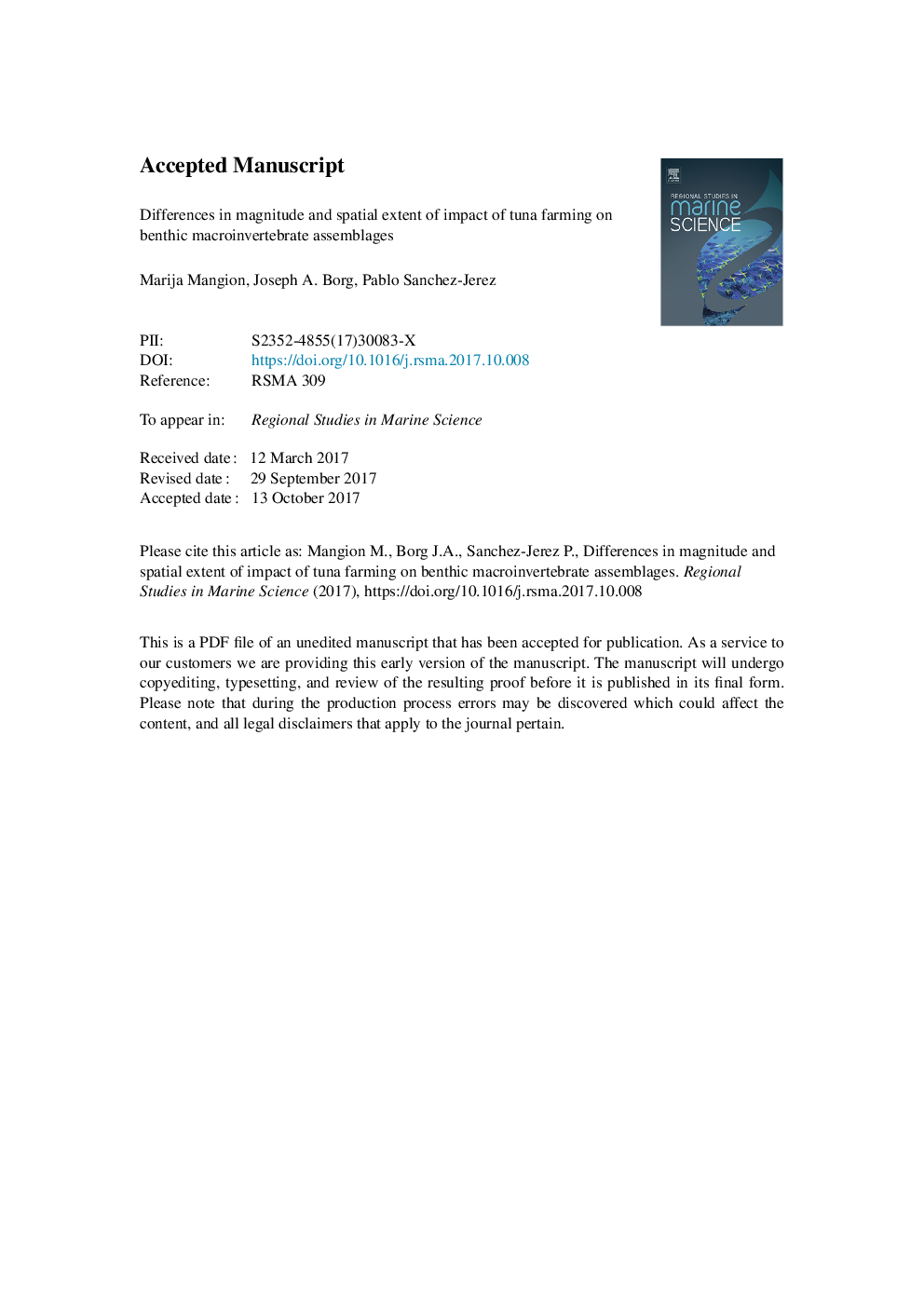| Article ID | Journal | Published Year | Pages | File Type |
|---|---|---|---|---|
| 8872634 | Regional Studies in Marine Science | 2018 | 42 Pages |
Abstract
Differences in magnitude and spatial extent of impact of three tuna farms located in Malta on polychaete and amphipod assemblages associated with soft sediment habitat were assessed using a hierarchical spatial design that incorporated different spatial scales, from tens of metres to a few kilometres. Spatial variation in impact was significant at the scale of location, at which farm size and local environmental factors differed. The magnitude of impact was higher at the larger farm, as indicated by elevated levels of sediment fish bone content, significantly lower number of polychaete families, and the 'Poor' ecological quality status recorded for the seabed area occupied by the cages. The influence of tuna farming activities on the benthic macroinvertebrate assemblages extended up to c. 1 km away from the cages, possibly due to transportation of particulate organic waste there via sea currents.
Keywords
Related Topics
Physical Sciences and Engineering
Earth and Planetary Sciences
Oceanography
Authors
Marija Mangion, Joseph A. Borg, Pablo Sanchez-Jerez,
